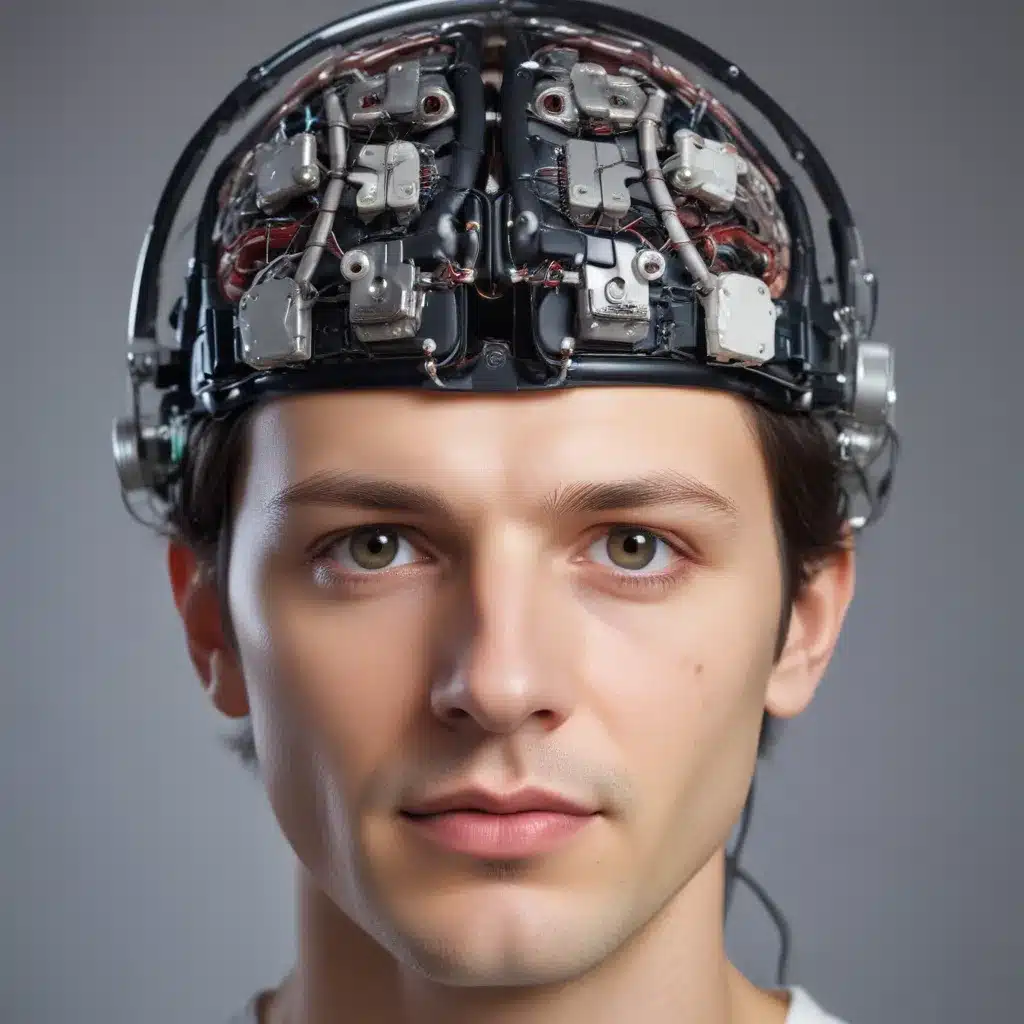
The Emergence of Brain-Computer Interfaces
I am fascinated by the rapid advancements in the field of brain-computer interfaces (BCIs). These innovative technologies hold the promise of merging the human mind with the digital world, unlocking entirely new realms of human-machine interaction. As an avid technophile, I have been closely following the progress in this field, and I am eager to share my insights with you.
The concept of BCIs is not entirely new, as the foundations were laid decades ago through groundbreaking research in neuroscience and engineering. However, the recent exponential growth in computational power, advancements in sensor technology, and deeper understanding of the human brain have propelled BCIs into the mainstream. Today, we stand at the cusp of a revolution, where the line between biological and artificial intelligence is becoming increasingly blurred.
The Fundamentals of Brain-Computer Interfaces
At the heart of a BCI system is the ability to translate neural signals into digital commands, allowing individuals to control external devices or interact with digital environments using the power of their thoughts alone. This is achieved through a complex interplay between specialized hardware, advanced algorithms, and a deep understanding of the brain’s intricate workiring.
The most common approach to BCI involves the use of electroencephalography (EEG) sensors, which are placed on the scalp to detect the electrical activity of the brain. These sensors capture the brain’s neural signals, which are then processed and interpreted by sophisticated software algorithms. The resulting data can be used to control a wide range of devices, from computer cursors and robotic limbs to virtual reality environments and communication interfaces.
However, EEG-based BCIs are not the only method of interfacing the brain with machines. Researchers have also explored alternative approaches, such as invasive techniques that involve the implantation of electrodes directly into the brain, and non-invasive methods that utilize functional magnetic resonance imaging (fMRI) or near-infrared spectroscopy (NIRS) to monitor brain activity.
The Applications of Brain-Computer Interfaces
The potential applications of BCIs are vast and diverse, spanning a wide range of industries and domains. Perhaps the most well-known application is in the field of medical and assistive technology, where BCIs have the power to transform the lives of individuals with physical disabilities or neurological disorders.
For instance, individuals with spinal cord injuries or amyotrophic lateral sclerosis (ALS) can use BCIs to control prosthetic limbs, communicate with others, or operate various assistive devices, restoring their independence and improving their quality of life. By directly tapping into the brain’s neural signals, these individuals can regain control over their environment and interact with the world in ways that were previously impossible.
Beyond medical applications, BCIs are also finding their way into the realm of entertainment and consumer electronics. Imagine being able to control a video game or operate a smart home device simply by thinking about it. This level of seamless human-machine interaction holds the potential to revolutionize the way we engage with technology, blurring the boundaries between the physical and digital worlds.
The Challenges and Ethical Considerations
While the promise of BCIs is undeniably exciting, the road to widespread adoption is not without its challenges. One of the primary hurdles is the need for further advancements in both the hardware and software components of these systems. Improving the accuracy, reliability, and user-friendliness of BCIs is crucial to ensuring their widespread adoption and acceptance.
Additionally, the ethical implications of BCI technology cannot be overlooked. As these systems become more sophisticated and integrated into our daily lives, questions arise regarding privacy, data security, and the potential for misuse or abuse. Ensuring that BCIs are developed and implemented with robust safeguards and clear ethical guidelines is paramount to maintaining public trust and ensuring the responsible advancement of this technology.
Furthermore, the societal impact of BCIs must be carefully considered. As these technologies become more accessible, there is a risk of widening the gap between those who can afford and access them and those who cannot. Addressing issues of equity and inclusivity will be crucial to ensuring that the benefits of BCIs are distributed equitably across all sectors of society.
The Future of Brain-Computer Interfaces
Despite the challenges, the future of BCIs is undoubtedly bright. As research and development in this field continue to progress, we can expect to see increasingly sophisticated and user-friendly BCI systems that seamlessly integrate with our daily lives.
One exciting area of development is the emergence of “brain-to-brain” interfaces, which hold the potential to enable direct communication between individuals, bypassing traditional modes of interaction. Imagine the implications of being able to share thoughts, emotions, and experiences with others, forging deeper connections and understanding.
Furthermore, the integration of BCIs with other emerging technologies, such as artificial intelligence and virtual/augmented reality, could lead to the creation of entirely new paradigms of human-machine interaction. The possibilities are truly limitless, and the future holds the promise of a world where the boundaries between the human mind and digital technology are blurred beyond recognition.
As we continue to push the boundaries of what is possible, it is essential that we approach this technological revolution with a keen sense of responsibility and a deep understanding of its ethical implications. By striking the right balance between innovation and ethical consideration, we can ensure that the integration of BCIs into our lives enhances our humanity rather than diminishing it.
In conclusion, the field of brain-computer interfaces represents a fascinating and rapidly evolving frontier in the world of technology. As we continue to explore the depths of the human mind and harness its incredible potential, the future that lies ahead is both awe-inspiring and humbling. I, for one, am excited to witness and participate in this extraordinary journey of merging man and machine.












